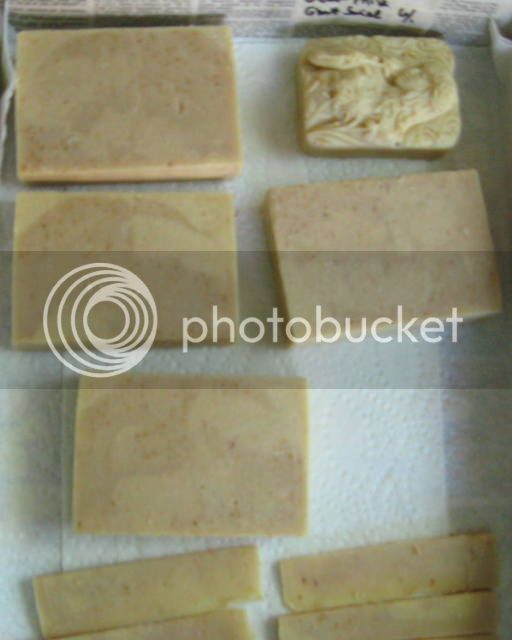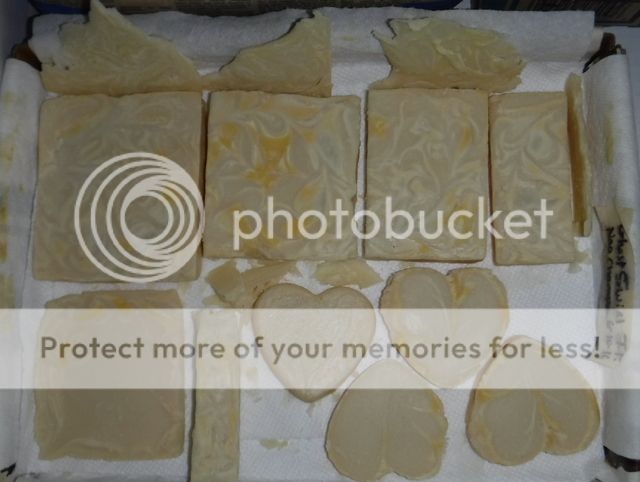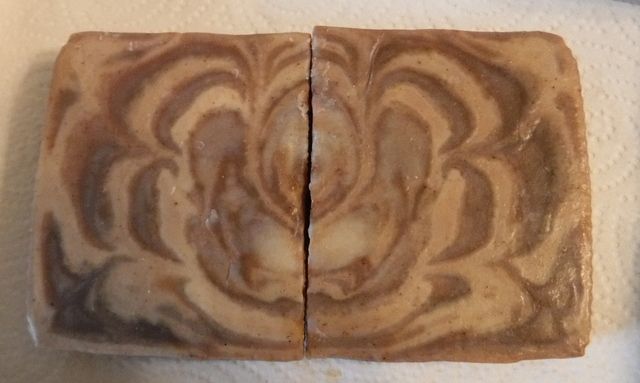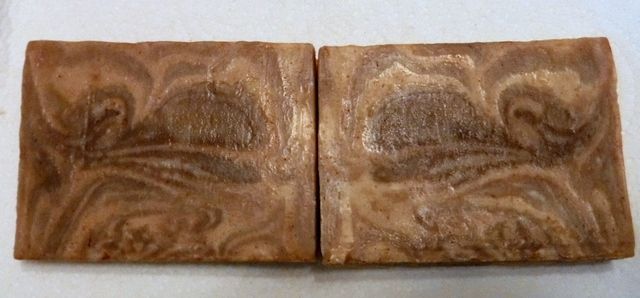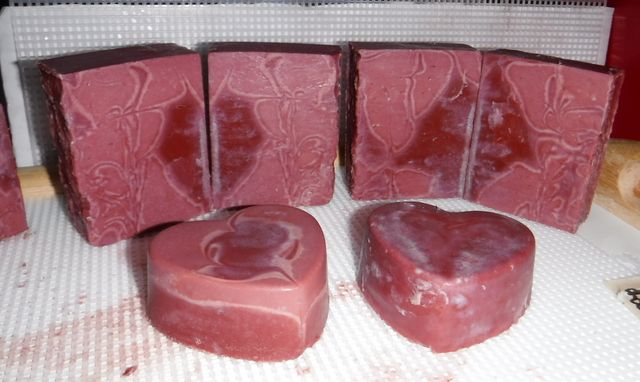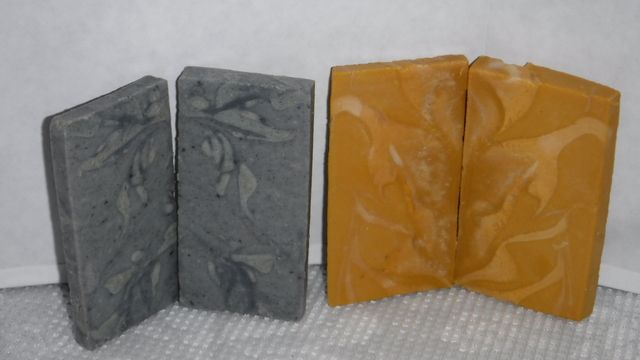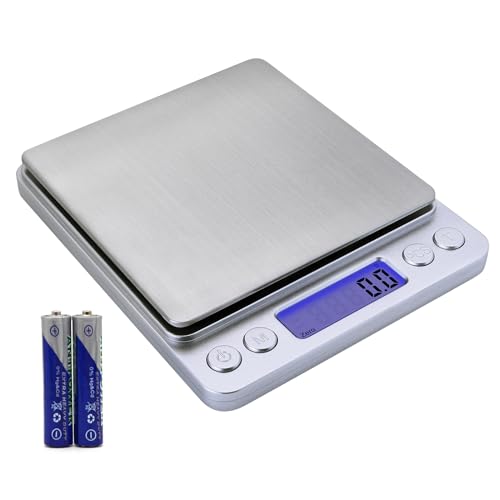It's now 6 months later and I thought I'd write a bit of an update and some impressions.
I LOVE the Nag Champa fragrance! It's still going strong and every time I wash my hands with that soap, I think to myself , 'I have to get more of this FO."
The manjista-containing soap lost the scent long ago, but of more interest, the remaining slim bars I kept (not used in the mosaic project) curled a bit and on one side sort of looked like pork rinds! I cleaned them up as best I could, planing and beveling and they look better again.
In fact, all the ghost swirl soaps changed over these past few months as they lost more water. The color difference remains, but it appears that the low water portions and high water portions of the soap shrank at different rates resulting in surface contours that in some of these soaps looked somewhat cancerous prior to additonal planing and cleaning up. In the yellow oxide-containing soap, the raised areas looked cool, sort of like brocade fabric. But in the indigo-containing soap, it looked like my soap had skin cancer. But it cleaned up pretty well with the planer. Perhaps it was more visible because I cut them very thin. It wasn't so prominent in the red oxide-containing soap, which are thicker soaps. The whitish soap with the Nag Champa fragrance did not curl up like the manjista soap did, which is interesting because the soap batter recipe was exactly the same aside from the added manjista powder and the thickness of the cut was the same. In looking back at my notes, I see I used the same calculations for the lye concentration for the high & low water portions in both these soaps, so I can only surmise that the manjista powder had some impact on the way the soap curled so much.
I'll post some update photos (probably in the morning) just as a reference.
One other thing that I noticed yesterday when planing and beveling these soaps was that the low water portion seems to be more brittle. When beveling the edges, that portion was much more likely to nick rather than to smoothly slide across the blade. At least I think it is the low water portion. I could have that reversed.
For the most part these soaps were ash-resistant, although I did see more ash on the high water portions of the soaps but not on the other. So I surmise that lye concentration might impact ash. Logic tells me that it's the higher water concentration areas that are more prone to ash. I am not sure if my logic is correct. *
* Okay, I looked it up. Auntie Clara made the same conclusion, so I feel good about that.
http://auntieclaras.com/2015/09/the-ghost-swirl/
She also mentions the uneven surface of low and high water soaps, as well as ash development in
this post. Since I have read that before, I guess I just forgot. But even so, I don't think I was expecting the surface changes to continue after the first month or so. But then, I can't be sure how long it's been since it stopped (if it has stopped.)
Anyhow, I have been shrink wrapping and labeling lots of soaps, and had to do the additional planing of these ones before I could do that. I'll keep an eye on them a bit longer to see if they stay unchanged.
I have named them.
Sisterhood of the Traveling Pants Soap (the indigo-colored soap)
Yellow Brick Road Soap (the matte yellow oxide-colored soap)
Nag Champa Ghost Swirl Soap (the whitish soap)
I have not come up with a name for the red oxide colored soaps yet. Maybe tomorrow.
The manjista soap, I am just calling Majista Soap for now. I don't expect to be giving out any of these except the Sisterhood of the Traveling Pants Soap. I plan to give some to a few cherished women in my life.
